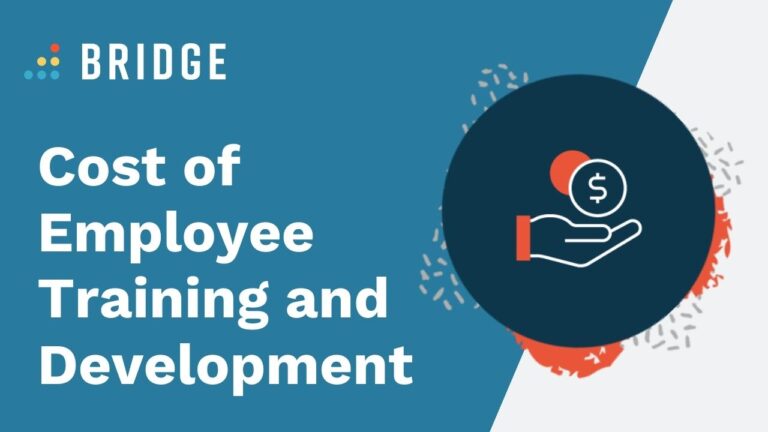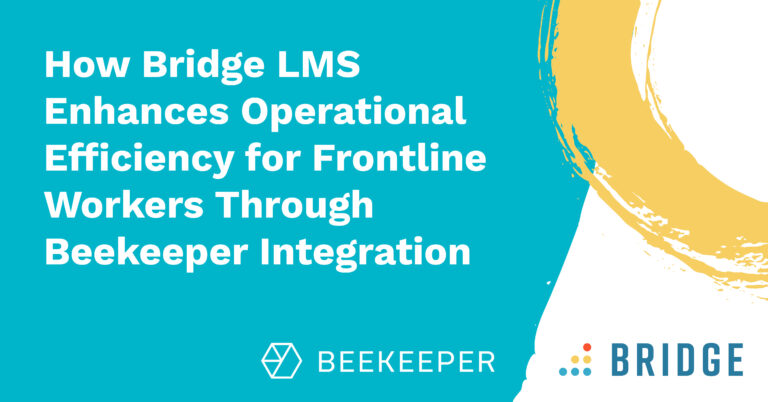Any company, regardless of its size, is only as good as its employees. Without a skilled and motivated workforce, a company essentially loses its backbone. In the human body, just a disc out of place in the vertebrae can significantly affect a person’s capacity to move and function properly. The same could be said of any organization. The cost of employee training and development cannot be overemphasized.
While this seems like a simple principle to guide employers, you will be surprised to know that not all implement an employee development program. Many employers think that effective employee training is an added cost that can be dispensed with. Some employers even believe that training employees will lead staff to pursue other opportunities with the knowledge gained through training. Little do employers realize that investing in employee training programs is a long-term solution to bring down overall costs and drive profit in a way that benefits all parties.
Investing in Employee Training
The importance of employee training cannot be emphasized enough. A survey conducted by PwC found that 35% of Millennials cited excellent training and development programs as the third most compelling reason they would work for a company. On the other hand, Fifty-two percent of the respondents cited opportunities for career progression as the number one reason they would choose to work for a particular company.
That said, the absence of effective employee training can lead staff to feel undervalued and frustrated. After all, being eligible for career progression necessitates advanced knowledge in their respective field. Because the company doesn’t invest time and resources to train their employees, staff will, in effect, reciprocate in kind, hesitating to invest all their existing skills for the company. Without this mutual investment, it will not be long before employee turnover rates increase. This can eventually cost more than implementing employee training programs in the first place.
This then begs the question: how much should you invest in employee training?
According to a 2019 study by Training Magazine, an average of $1,286 a year was spent on training per employee. Training duration amounted to an average of 42.1 hours for both new hires and current employees. However, it’s important to note that there are factors that can vary the cost of employee training and development. These can include the following:
Size of the Company
The same report from Training Magazine found that large companies allotted an average budget of $17.7 million on employee training; midsize companies allotted an average of $1.7 million, and small companies allotted an average of $367,490.
However, it’s important to remember that these allocations are relative to the overall budget and capacity of the company. That said, large companies with a higher number of employees end up spending less on employee training than small companies. This is because having a smaller number of employees means disruptions in the company’s operations can have a bigger impact on both employee productivity and the bottom line.
It cannot be denied that effective employee training takes time. Time spent on training means time spent away from fulfilling some day-to-day duties, which can disrupt the company’s workflow. For smaller companies, it’s harder to cover for the time an employee spends in training, thus leading to relatively higher costs.
The number of employees participating in training programs is also a factor related to the size of a company. With just a few participants, employers may feel that the cost of training isn’t justified or something they could not yet afford. Larger companies, on the other hand, tend to maximize employee training setups as there are potentially more participants who can take advantage of an instructor’s time or the cost of a learning and performance management solution.
Type and Scope of Training
The type and scope of employee training is also a factor that can affect costs. Traditionally, employee training is delivered via a classroom setup with instructor-led modules. For some companies, this can mean sending their employees to a center if they don’t have an available classroom in their office building. Of course, a company also has to pay for the instructor’s time, which is relative to the instructor’s expertise. Also taken into account is how long the training would progress until completion.
Fortunately, there are now blended learning options that combine instructor-led classrooms with technology-based training delivery methods. An example is having a virtual classroom, wherein the instructor can teach from a remote location. This type of training method cuts down on travel costs as employees can stay within their office location and still receive the same training they would have in a center.
Another more cost-effective solution is implementing online or computer-based training methods wherein an instructor no longer becomes necessary. One example is having a learning management system in place, such as Bridge LMS platforms.
A learning management system program like those offered by Bridge can lower costs considerably: you neither have to pay for an instructor nor require employees to travel to a center for training. With its easy-to-integrate LMS system, Bridge can provide effective, scalable, and engaging learning platforms that are specially designed to enhance employee performance and foster career development. Operational disruptions can also be minimized as employees receiving training through LMS can be connected to managers. This makes employee performance easier to track. With training via an LMS, results can be achieved faster with less cost and minimal disruptions. At the same time, the scope of training can be adjusted accordingly.
In light of the COVID-19 pandemic, traditional instructor-led training setups may eventually be phased out due to safety protocols and restrictions. With companies shifting to remote working conditions, it makes sense for employee training to also undergo the same shift. Other technology-based training methods that may prove to be less costly in the long run include the use of mobile gadgets, as well as augmented and virtual reality.
Employee’s Existing Skill Set
The effectiveness of employee training can be likened to healthy communication: it must go both ways. It isn’t enough that a company should take into account the type of training delivery methods used. It must also consider the existing skillsets of employees and their learning retention rates as these, too, can affect training costs.
One factor that employers tend to overlook is the fact that each employee is a unique individual. Thus, they have varying degrees of experience and skills. Not everyone begins with the same level of knowledge or the capacity to comprehend or retain information. While you may have a generally effective training program in place, it’s unreasonable to expect everyone to reach the same level of knowledge at the same pace. Those who have more skill sets and are faster learners may spend less time training than their peers. Thus, upskilling two employees on the same level can still amount to varying costs. Bridging a greater skills gap for one employee will naturally mean higher training costs and longer training durations.
Loss of Productivity
As mentioned, time spent training is time spent away from accomplishing assigned tasks. Thus, training essentially means sacrificing immediate productivity for long-term, enhanced productivity. However, the reality is that loss of productivity will still happen in the interim. This means costs can double, especially if another employee will have to cover for a trainee’s tasks. Overtime pay is also a factor to consider as some employees may need to allot extra hours to finish tasks they couldn’t attend to while undergoing training.
Other Costs
Other costs involved in employee training are more indirect than the ones mentioned above. While these might not be as noticeable, the following can still factor into the costs needed to train an employee:
Time allotted by a supervisor to evaluate a trainee’s performance
Travel costs if you need to send employees to a training center
Overhead costs such as food or electricity spent for extra training hours, etc.
Costs for training materials such as printed modules, or devices needed for technology-based training
Employee Training and Retention
Given that employee training can be expensive, is it worth the investment?
One often-overlooked benefit that can result from employee training is low turnover rates. According to Gallup, businesses can lose as much as $1 trillion a year due to employee turnover. While many reasons can lead to this scenario, Gallup’s data suggest that job satisfaction and career growth are among the primary factors involved in voluntary turnover based on 51% of its survey respondents. These turnovers could have been avoided if employees received ample training.
More than just upskilling employees, effective training can lead to a happier work environment. This can happen in the following ways:
Employees will be more motivated to work because they have the skills needed to excel and accomplish their tasks.
Providing training programs is also one way a company can boost employees’ morale as staff will feel they are being supported.
Added knowledge that employees gain from training will also make them eligible for internal promotions, thus opening doors to career growth within the company.
Training employees will also mean they require less supervision, allowing them to feel confident and more responsible in their position.
That said, employee training can be considered an important step in creating a workplace culture that fosters loyalty among employees. Aside from feeling motivated to work, loyal employees are more likely to stay longer in the company, significantly reducing turnover rates. As a result, the company will not only spend less on training new hires, but it will also reduce costs for recruitment, onboarding, and severance packages.
How To Strengthen Employee Retention
Aside from employee training, there are several ways you can retain employees, especially top performers whose training you’ve invested in. Some of these can include the following:
Regular compensation evaluation: It’s not enough that a company offers competitive compensation. It’s also important for managers to recognize if an employee’s salary is commensurate with their workplace responsibilities and skills. Many employees may feel that their compensation falls short of their performance, but not everyone will speak up for fear of being viewed negatively. Some employees may also not realize that their compensation is much lower than what they should be getting. Thus, regularly evaluating their compensation rates will keep employees from leaving.
Better communication: Many employees tend to leave because they feel as though their opinions aren’t valued. To keep employees within the company, leaders and managers must exercise open communication. This can be in the form of job satisfaction surveys, forms, or a scheduled touch base with each member of the staff. Not only will this make employees feel valued, but leaders can gain better insight into how they can better apply workforce management.
Acknowledging milestones: Recognizing performance excellence, whether big or small, can boost employee morale and strengthen retention. It tells employees that their dedication is not taken for granted. Acknowledging milestones can be done by giving out rewards or implementing a recognition program that incentivizes going the extra mile or coming up with innovative solutions.
Put Your Employees First
While it’s undeniable that training can take up time and resources, the rewards outweigh the disadvantages. Investing in effective employee training programs such as LMS from Bridge can cut down training costs while enhancing performance and helping in career development. With its easy-to-integrate LMS system, companies can train employees with minimal disruptions and retain a productive and loyal talent pool.




